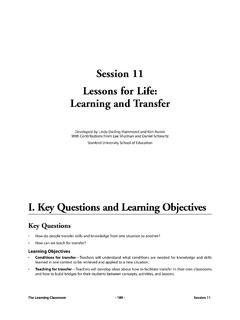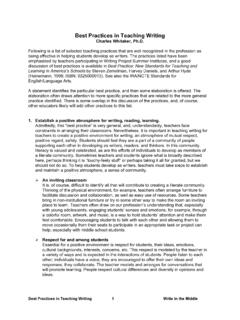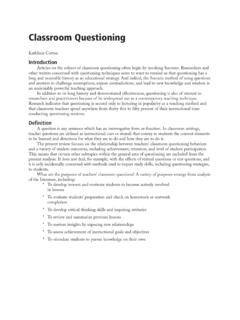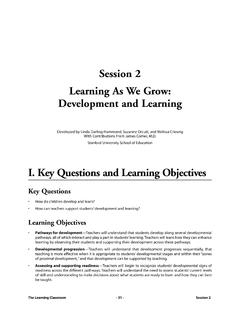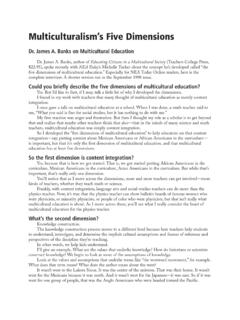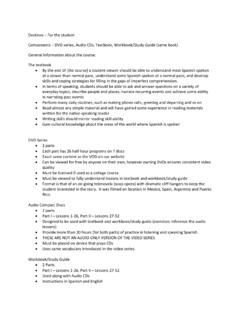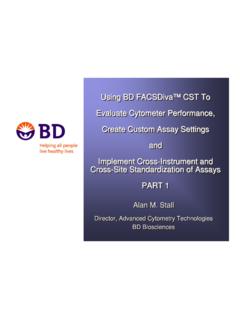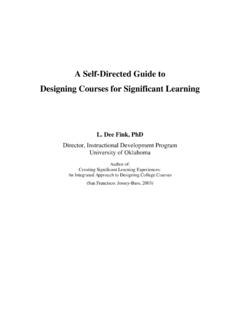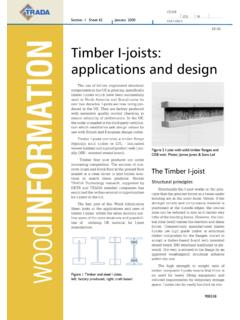Transcription of Performance Assessment - Learner
1 Performance Assessment In its simplest terms, a Performance Assessment is one which requires students to demonstrate that they have mastered specific skills and competencies by performing or producing Advocates of Performance Assessment call for assessments of the following kind: designing and carrying out experiments; writing essays which require students to rethink, to integrate, or to apply information;. working with other students to accomplish tasks; demonstrating proficiency in using a piece of equipment or a technique; building models; developing, interpreting, and using maps; making collections; writing term papers, critiques, poems, or short stories; giving speeches; playing musical instruments; participating in oral examinations; developing portfolios; developing athletic skills or routines, etc.
2 Authentic Assessment Similar to Performance Assessment is the concept of authentic Assessment . Meyer (1992) notes that Performance and authentic assessments are not the same, and that a Performance is authentic to the extent it is based on challenging and engaging tasks which resemble the context in which adults do their work. In practical terms, this means that an authentic task or Assessment is one in which students are allowed adequate time to plan, to complete the work, to self-assess, to revise, and to consult with others. Meyer also contends that authentic assessments must be judged by the same kinds of criteria (standards). which are used to judge adult Performance on similar tasks. A more elaborate definition of authenticity is offered by Wiggins (1990, CLASS), who suggests that three factors determine the authenticity of an Assessment : the task, the context, and the evaluation criteria.
3 An authentic task is one which requires the student to use knowledge or skills to produce a product or complete a Performance . Based on this definition, memorizing a formula would not be an authentic task; however, using the formula to solve a practical problem would be. As for context, Wiggins suggests that there be as much realism as is possible. He maintains that the setting (including the time allowed to complete the task) should mimic or duplicate the context faced by professionals, citizens, and consumers. An examination in which the student has almost no prior knowledge of what will be asked, little time to complete the activity, and no opportunity to reflect or consult appropriate resources would not be authentic. Finally, Wiggins states that an authentic Assessment should be judged using criteria which are simi- lar to those used to judge adults who perform or produce.
4 As an example, authentic criteria used to eval- uate a written paper would give primary consideration to the paper's organization and ideas; mechanical errors (such as spelling, punctuation, grammar) would not be the primary focus. What is to be made of the distinction between Performance and authentic assessments? Fortier (1993) notes that authenticity is always a relative concept and that it is unrealistic to expect that an Assessment will be completely authentic. For example, he points out that a driving test, even though most would define it as authentic when compared with a paper and pencil test, can never be completely such because drivers do not ordinarily have a law officer seated next to them while they drive. In short, as the term is used in the literature, an authentic Performance Assessment requires students to demonstrate skills and competencies which realistically represent those needed for success in the daily lives of adults.
5 Authentic tasks are worth repeating and practicing. They require students to apply what they know, not merely to recall or recognize information. Finally, authentic tasks are those which are judged by criteria or standards similar to those used to evaluate the efforts of adults. Authentic Instruction and Learning Similar to Performance or authentic Assessment is the term authentic learning and instruction. Although this term refers to instruction and learning, it is appropriate to discuss it within the framework of Assessment because those who call for changes in either Assessment or instruction maintain that Assessment and instruction must be integrated. In a 1993 article in Educational Leadership, Newmann and Wehlage use the concept authentic instruction to describe instruction which results in significant and meaningful student achievement, in contrast with that which is trivial and In particular, Newmann and Wehlage maintain that instruction is authentic if it helps students achieve three broad goals: 1.
6 Construct meaning and produce knowledge, 2. use disciplined inquiry to construct meaning, and 3. aim work toward production of discourse, products, and performances that have value or meaning beyond success in school To help the reader understand the concept of authentic instruction, the authors offer five standards or criteria, each based on a five-point scale, which can be used to evaluate the extent to which a lesson is authentic. These criteria, with explanations in parentheses, are as follow 1. Students employ higher-order thinking skills (students apply knowledge and skills to solve problems, to synthesize, to explain, etc.). 2. Depth of Knowledge (understanding of a concept, topic, or skill is not superficial). 3. Connectedness to the World (problems/topics are ones which occur in the larger society/ world).
7 4. Substantive Conversation (teacher-student conversation is two-way and meaningful). 5. Social Support for Student Achievement (the teacher, school and community expect all students to achieve). Performance Criteria 5. Advocates of Performance assessments maintain that every task must have Performance criteria for at least two reasons: (1) the criteria define for students and others the type of behavior or attributes of a product which are expected, and (2) a well-defined scoring system allows the teacher, the students, and others to evaluate a Performance or product as objectively as possible. If Performance criteria are well defined, another person acting independently will award a student essentially the same score. Furthermore, well-written Performance criteria will allow the teacher to be consistent in scoring over time.
8 Stiggins (1991) notes that if a teacher fails to have a clear sense of the full dimensions of Performance , ranging from poor or unacceptable to exemplary, he or she will not be able to teach students to perform at the highest levels or help students to evaluate their own Performance . In developing Performance criteria, Stiggins maintains that one must both define the attribute(s). being evaluated and also develop a Performance continuum. For example, one attribute in the evaluation of writing might be writing mechanics, defined as the extent to which the student correctly uses proper grammar, punctuation, and spelling. As for the Performance dimension, it can range from high quality (well-organized, good transitions with few errors) to low quality (so many errors that the paper is difficult to read and understand).
9 The key to developing Performance criteria, asserts Stiggins, is to place oneself in the hypothetical situation of having to give feedback to a student who has performed poorly on a task. Stiggins suggests that a teacher should be able to tell the student exactly what must be done to receive a higher score. If Performance criteria are well defined (with examples provided whenever possible), the student then will understand what he or she must do to improve. It is possible, of course, to develop Performance criteria for almost any of the characteristics or attrib- utes of a Performance or product. However, experts in developing Performance criteria warn against evalu- ating those aspects of a Performance or product which are easily measured (such as counting mechanical errors) or failing to distinguish between quality and quantity.
10 Ultimately, it is asserted, performances and products must be judged on those attributes which are most crucial. Portfolios Invariably, proponents of Performance Assessment also advocate the use of student portfolios. In doing so, they also remind us that a portfolio is more than a folder stuffed with student papers, video tapes, progress reports, or related materials. It must be a purposeful collection of student work that tells the story of a student's efforts, progress, or achievement in a given area over a period of time. If it is to be useful, specific design criteria also must be used to create and maintain a portfolio system. Typically, proponents of portfolios suggest two reasons for their use. The first reason reflects dissatisfaction with the kind of information typically provided to students, parents, teachers, and members of the community about what students have learned or are able to do.

